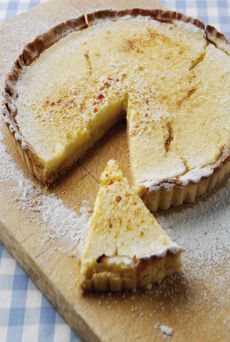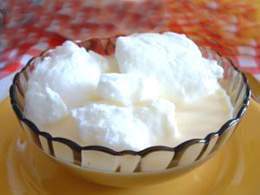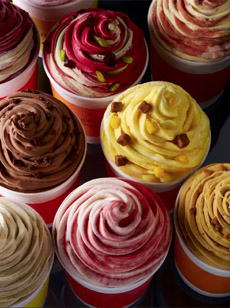Custard Glossary: A Glossary Of The Different Custard TypesPage 3: Custard Terms E To F This is Page 3 of an 1-page article. Click on the red links below to visit other pages. This glossary is protected by copyright and cannot be reproduced in whole or part. You are welcome to link to it.
|
 A delicious dish of flan, or crème caramel. Photo by Rafa Irusta | Dreamstime. |
|
|
ÉCLAIR: A finger-shaped pastry made of pâte à choux with a glacé icing, filled with custard or whipped cream. It is known to have originated in France around the turn of the 19th century. Many food historians speculate that éclairs were first made by Marie-Antoine Carême (1874-1833), the first “celebrity chef,” considered the founder and architect of French haute cuisine, cookbook author, and chef to Talleyrand, the future George IV of England, Emperor Alexander I of Russia and Baron James de Rothschild. |
 Chocolate and caramel éclairs. Photo courtesy Christophe Artisan Chocolatier. |
|
|
The Oxford English Dictionary traces the term “éclair” in the English language to 1861. The first known recipe for éclairs appears in the 1884 edition of the Boston Cooking-School Cook Book edited by Mrs. D.A. Lincoln. “Éclair” is the French word for lightning. It is suggested that the pastry received its name because it glistens when coated with confectioner’s glaze. We would suggest that it is because they are so popular that they disappear as quickly as lightning. ENGLISH CREAM: ENGLISH TRIFLE: FLAN: FLAN (TART): |
 A tart filled with custard or pastry cream is also called a flan. Photo courtesy FAGE. |
|
|
FLOATING ISLAND: Also known as oeufs à la neige, “snow eggs,” a delicate dessert of stiffly beaten, sweetened egg white mounds (meringue “islands”) that have been poached in milk, then floated in a thin custard sauce. In France, île flottante, “floating island,” is a liqueur-sprinkled sponge cake spread with jam, and topped with nuts and whipped cream, surrounded by a pool of custard. Cocoa powder and confectioner’s sugar can be added to whipped egg whites to make chocolate floating island. FRANGIPANE:Almond custard filling, a thick type of crème pâtissière mixed with powdered almonds or crushed macaroons. It is used as a filling for tarts or crêpes. FRENCH ICE CREAM:Ice cream with a cooked egg-custard base. See crème anglaise.
|
 Floating Island. Photo courtesy SXC. |
|
| FROZEN CUSTARD ICE CREAM: Another term for French ice cream, made with egg yolks and cream—the ingredients for custard. In the U.S., frozen custard now also refers to a soft-serve ice cream. However, “frozen custard” was served as early as the late 1800s, long before the invention of soft-serve. The Department of Agriculture standards recognize the term Frozen Custard for an egg-based ice cream, not a soft-serve ice cream, as follows: NOTE ON “FROZEN CUSTARD”: Means “French Ice Cream,” “French Custard Ice Cream,” ice custard, parfaits and similar frozen products. In addition to the definition above, it shall also contain for each ninety pounds thereof not less than (a) five dozen of clean wholesome egg yolks, (b) one and five-tenth pounds of wholesome dry egg yolk containing not to exceed seven percent of moisture, (c) three pounds of wholesome frozen egg yolk containing not to exceed fifty-five percent of moisture, or (d) the equivalent of egg yolk in any form. For more on frozen custard, see our Ice Cream & Frozen Desserts Glossary and the History Of Frozen Custard. Continue To Page 4: Terms With G To P |
 Frozen custard originally referred to ice cream made with egg yolks (eggs and cream are the base of custard). Today, it usually refers to soft serve, a later use of the term. Photo courtesy Pierre Hermé. |
Last Updated May 2018
© Copyright 2005-2025 Lifestyle Direct, Inc. All rights reserved. All images are copyrighted to their respective owners.